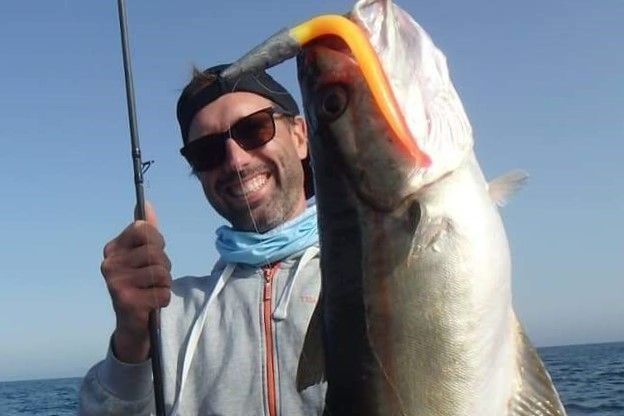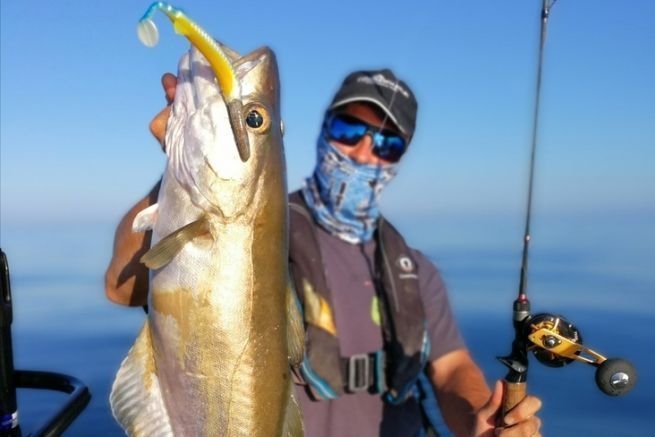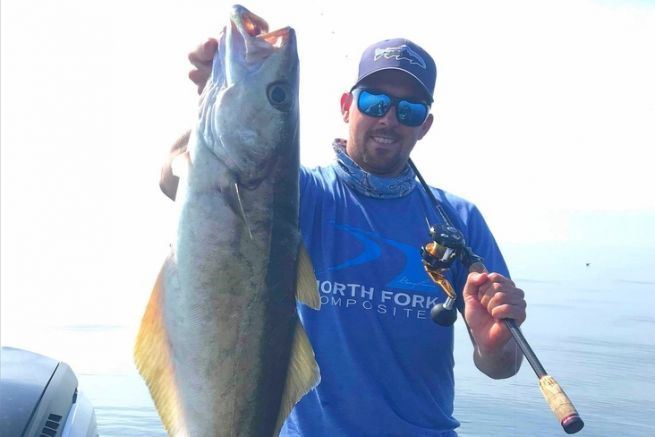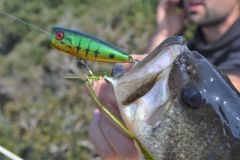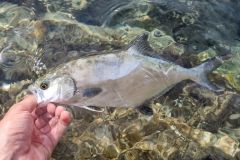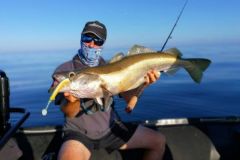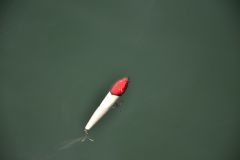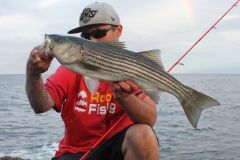Vertical fishing can be practised at any depth and in any sector.
Personally, I use it whenever it becomes difficult to fish properly, either because of the depth (as soon as it exceeds 25/30m) or when the current is strong and the area exceeds 20m.
In this article, I'm going to talk about the lures I use specifically in deep waters. These lures are necessarily bulky and often heavy. Of course, you can make the most of them on shallower areas by reducing the size and adapting the weight.

Two main types of lure
Choosing the right lure means finding the one that's right for the situation, the depth and the behavior of the fish. By habit, many anglers take the one they usually use and which has already proved its worth.
Among the multitude of lures available, two families stand out among those I use for vertical fishing, both with their own specificities and areas of use:
- soft lures (shad or slug type)
- Metals like jigs
How to choose between soft lures and jigs?
It all depends on your target species and fishing area. If you're looking for mackerel, a small jig, vertical in the water column, will guarantee a few catches.
If you leave it on the bottom, you'll be amazed at the diversity of species you can catch.
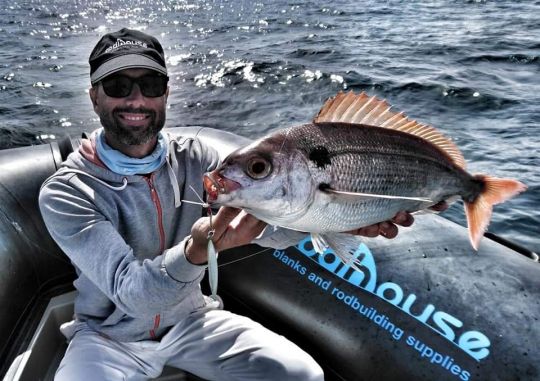
Soft lures target predators such as sea bass, pollack, cod, etc. Although jigs can obviously target these species too, they also have the ability to sink faster due to their high density.
Soft lures
I opt for shad-type soft lures when I want to stir up a lot of water thanks to the often imposing paddle, but also when the fishfinder indicates the presence of forage fish other than sand eels.
These shads allow me to use big patterns and try to target the best catches. Having said that, using a slug-shaped lure, i.e. one that is elongated, is very useful when I'm in the presence of a fairly strong current or when the wind gets in the way of my drift. The long shape of the lure allows for better penetration into the water and therefore a better descent.
As far as size is concerned, given that I mainly fish vertically in deep areas, above 40m, I often need to use a lead head weighing at least 80 grams. To ensure consistency, I opt for shads of at least 18cm.
As far as color is concerned, I alternate between natural colors like blue or khaki and, when I notice the absence of a touch, I opt for a fluorescent color like red/orange or pink, which often brings me results.
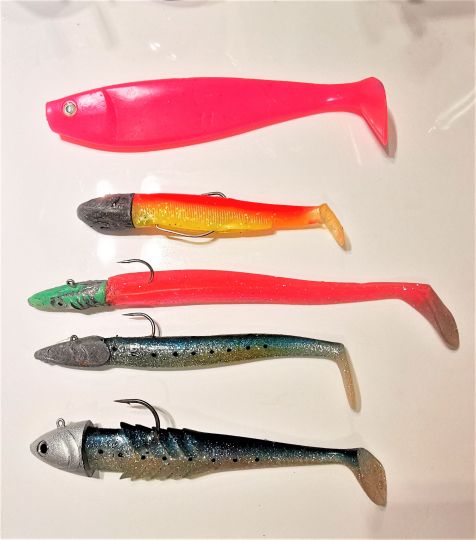
Jigs
There's no doubt that you'll catch the widest variety of species with this type of lure.
These lures, which can be flown, lifted or waddled, attract all predators.
As far as I'm concerned, it's obviously towards the ragot herring that I presented in a previous article that I turn by adapting the size to the depth.
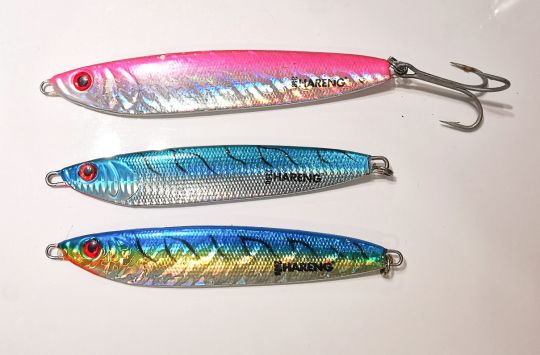
As far as color is concerned, I have to admit that pink is my favorite. I don't know why, but I have to say that my best sessions, whatever the sector, have been in this color. I also appreciate natural colors such as blue, green or ayu, especially at the start of the season when the blue fish aren't around.

 /
/ 